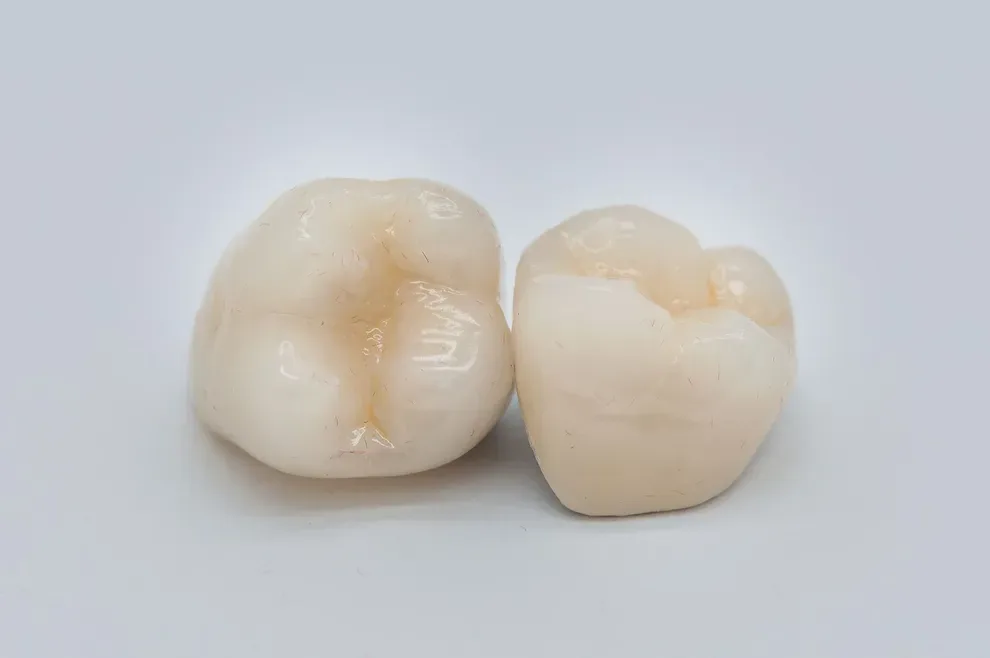What Is a Porcelain Crown & How Often Are They Used?

Table of Contents
- Specifics of Porcelain Crowns
- Why a Porcelain Crown
- Frequency Porcelain Crowns Used
- Benefits of Porcelain Crowns
- Potential Pitfalls
- Porcelain Crown Costs
- Placing a Porcelain Crown
- References
Dental crowns are placed on a tooth to restore its shape, size, strength, and functionality. They are like caps that go over what is left of a tooth. There are many different types of materials used for dental crowns, including glass, ceramic, composite, and metal.
Porcelain is another material used for dental crowns because it looks the most like a natural tooth. Porcelain crowns are not very strong, however. Most of the time, they are fused over the top of a metal base, so you get the durability and functionality of a metal crown with the look of a porcelain crown.
Specifics of Porcelain Crowns
A dental crown is a form of cap used to maintain or improve the shape, function, appearance, and strength of a tooth that is damaged.
Porcelain is a translucent material that can look as close to your natural tooth color as possible. This makes porcelain crowns aesthetically appealing. Porcelain crowns can be good for front and very visible teeth.
Porcelain crowns are not resistant to chips, breaks, or cavities. Because of this, they are not a great choice for back teeth or teeth that get a lot of wear and tear.
Why a Porcelain Crown
Porcelain crowns are typically chosen for the way they look. A porcelain crown can look the most like your natural tooth, improving your smile and overall appearance.
There are many reasons why you might need a dental crown, such as:
For chipped or broken teeth.
To cover a dental implant.
To reshape and protect a tooth after a root canal.
When the cavity is too large for a traditional filling.
To improve the appearance of a misshapen or discolored tooth.
How Often Are Porcelain Crowns Used?
Fully porcelain crowns are not used very frequently today, as there are many more materials that can offer more durability and strength and still be aesthetically pleasing. Instead of an all-porcelain crown, porcelain-fused-to-metal (PFM) crowns are used more frequently.
Around 15 years ago, PFM crowns were the most popular crowns being used at 83 percent. This percentage has been cut in half due to newer and stronger materials no longer requiring the metal base. PFM crowns still remain among the top three choices for dental crowns and make up about a third of all dental crowns being placed.
There are multiple variations of porcelain crowns, including traditional, empress, Procera, lava, zirconia, and Emax, all of which will be selected by your dentist as the best option for you.
Benefits of Porcelain Crowns
PFM crowns use a strong metal base that is then covered by a porcelain veneer, giving the strength and durability of metal and the more natural look of porcelain.
PFM crowns have a good durability level, lasting at least 10 years over 94 percent of the time. They can last up to 20 years when cared for correctly, and they are considered to have aesthetic and functional longevity and strength.
Porcelain crowns can make you more willing to smile, helping to enhance your self-confidence and quality of life. Crowns improve your ability to eat, talk, and the way you look.
Potential Pitfalls
Porcelain crowns are more prone to chipping, breaking, and fractures than more hardy materials, including metals, ceramics, and zirconia. Porcelain-fused-to-metal crowns are more durable than all-porcelain crowns, but they have their downsides. These include:
Potential for the porcelain veneer to chip off.
Discoloration of the porcelain over time, showing the metal underneath.
Possibility of a reaction to the metal at the gumline.
Faster wear on opposing teeth due to their strength.
Porcelain crowns and PFM crowns can look good, but they often do not have the same durability and longevity as other dental crown materials. For example, zirconia and ceramic crowns can also look close to natural tooth color, but they will last longer and be more durable than a porcelain crown.
How Much Does a Porcelain Crown Cost?
Porcelain crowns can be some of the most expensive crowns on the market, costing between $800 and $3,000 on average per tooth. Price can depend on many factors, including the knowledge and experience of the dentist, difficulty of placement, and materials used.
Prices for metal can fluctuate, which can influence the cost of a PFM crown. PFM crowns cost around $1,000 each on average.
Procedure for Placing a Porcelain Crown
When getting a crown placed, the dentist must first prepare your tooth. This can include cleaning out tooth decay or even doing a root canal first. This may require additional appointments.
The dentist will also need to take x-rays and may administer a local anesthetic. An impression will then be taken of your tooth and the surrounding teeth. This will be sent to a special lab that will manufacture your porcelain crown.
Your dentist will place a temporary crown on your tooth while you wait for your customized crown to be formed. Once the crown is delivered, you will go back to the dentist to have the permanent crown cemented onto your tooth.
Porcelain crowns often take more time to place than traditional crowns. The dentist placing it may need to be more skilled than those who only place traditional crowns.
